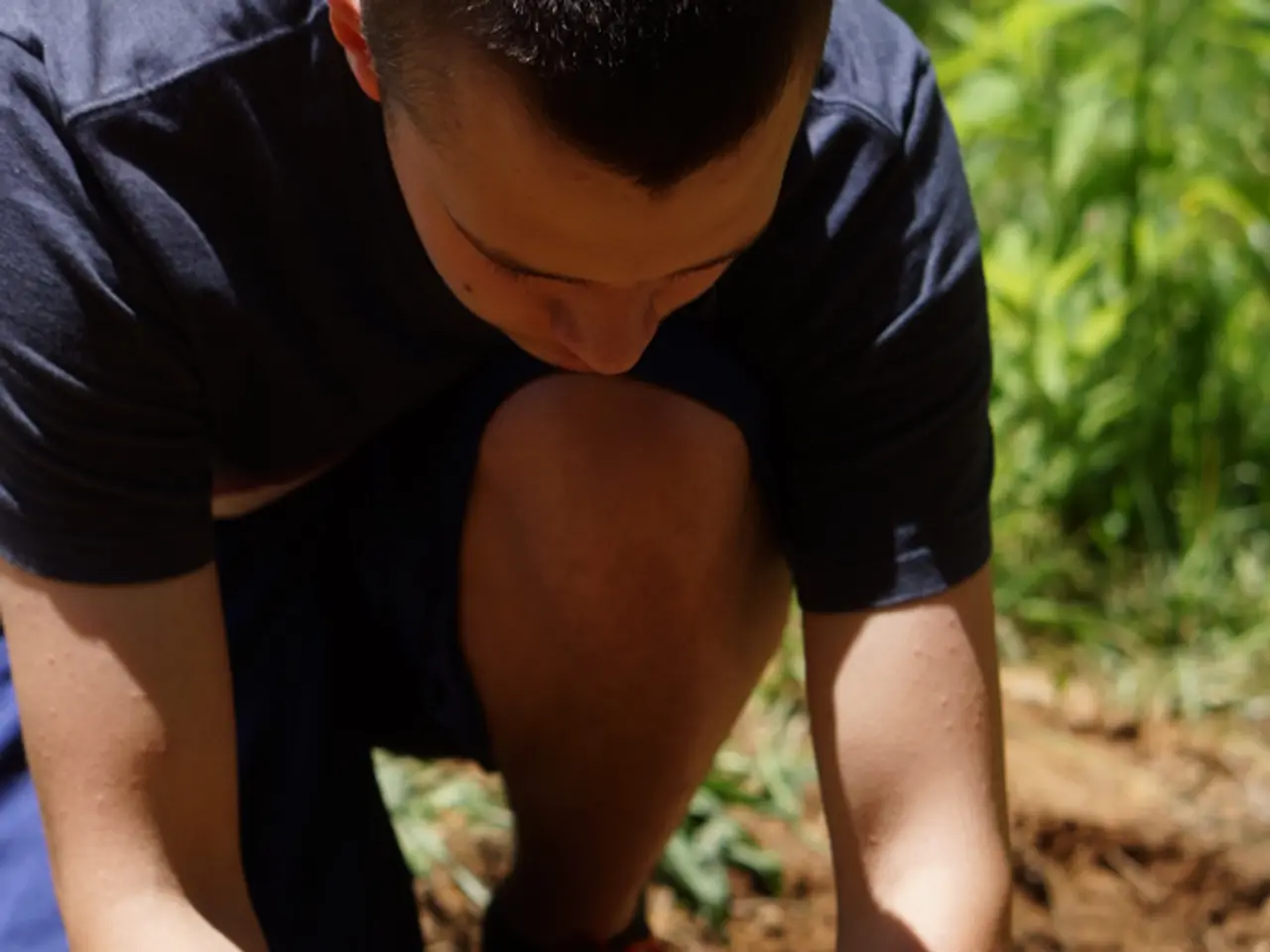Backyard Herb Essential Equipment
In the heart of your backyard, a thriving herb garden can be a delightful addition. To ensure your herbs flourish, there are several tools that can make the gardening process more efficient and enjoyable.
Firstly, garden gloves are essential for protecting your hands, especially when dealing with thorny plants or rough soil. A hand trowel, on the other hand, is used for digging holes and moving soil, particularly for planting seeds and young plants in your herb garden.
Watering herbs early in the morning or later in the evening helps reduce evaporation and ensures plants get enough moisture. A watering can allows for the precise watering of herbs, giving them the right amount of water without soaking them. For deep watering, a soaker hose is perfect, slowly releasing water and soaking the roots without overdoing it.
Pruning shears are used for trimming and shaping herbs, helping to snip away dead leaves and encourage new growth. Regularly trimming herbs also helps them grow bushier and encourages new growth.
Clearing the area of weeds, rocks, or old plants before planting helps provide a clean slate for herbs to grow. A garden hoe is effective for weeding and cultivating soil in garden beds, while a garden weeder, like the Cape Cod Weeder, is designed for cutting weeds just below the soil surface, especially in tight spaces between plants.
Turning the soil to a depth of about 12 inches using a garden spade helps aerate the soil and allows roots to grow deep. A broadfork is helpful for aerating soil with minimal disturbance, valuable in larger or organic gardens for improving soil health.
Soil preparation is also the time to check the pH and nutrient levels of the soil. Using a soil tester is important, as most herbs prefer a pH between 6.0 and 7.0. Adding organic matter like compost or well-rotted manure to the soil enriches it and provides essential nutrients for herbs.
A compost bin is used for creating nutrient-rich compost during soil preparation. Smoothing out the soil surface with a rake helps with water drainage and makes planting easier.
Lastly, a sturdy watering can with a long spout and a sprinkler head is useful for gentle, targeted watering. A flexible garden hose with a spray nozzle is useful for quick watering of larger areas.
In addition to these tools, a hand fork (hand cultivator), spade or digging shovel, and a dibber can also complement your basic set, improving efficiency in soil preparation, planting, weeding, and overall maintenance in a backyard herb garden.
[1] https://www.bhg.com/gardening/tools/garden-tools-for-herbs/ [2] https://www.gardeningknowhow.com/garden-how-to/tools/herb-garden-tools.htm [3] https://www.almanac.com/gardening/best-tools-for-herb-gardening [4] https://www.thespruce.com/herb-garden-tools-2132635 [5] https://www.motherearthnews.com/organic-gardening/herb-garden-tools-zmaz1203znew/
Quality garden gloves and a hand trowel can be crucial additions to your home-and-garden tool collection, enhancing your gardening lifestyle by protecting your hands and facilitating the planting process in your thriving herb garden. On the other hand, a watering can and a soaker hose, used for precise watering and deep watering respectively, ensure your herbs receive the perfect amount of moisture, contributing to a vibrant lifestyle in your home-and-garden environment.







